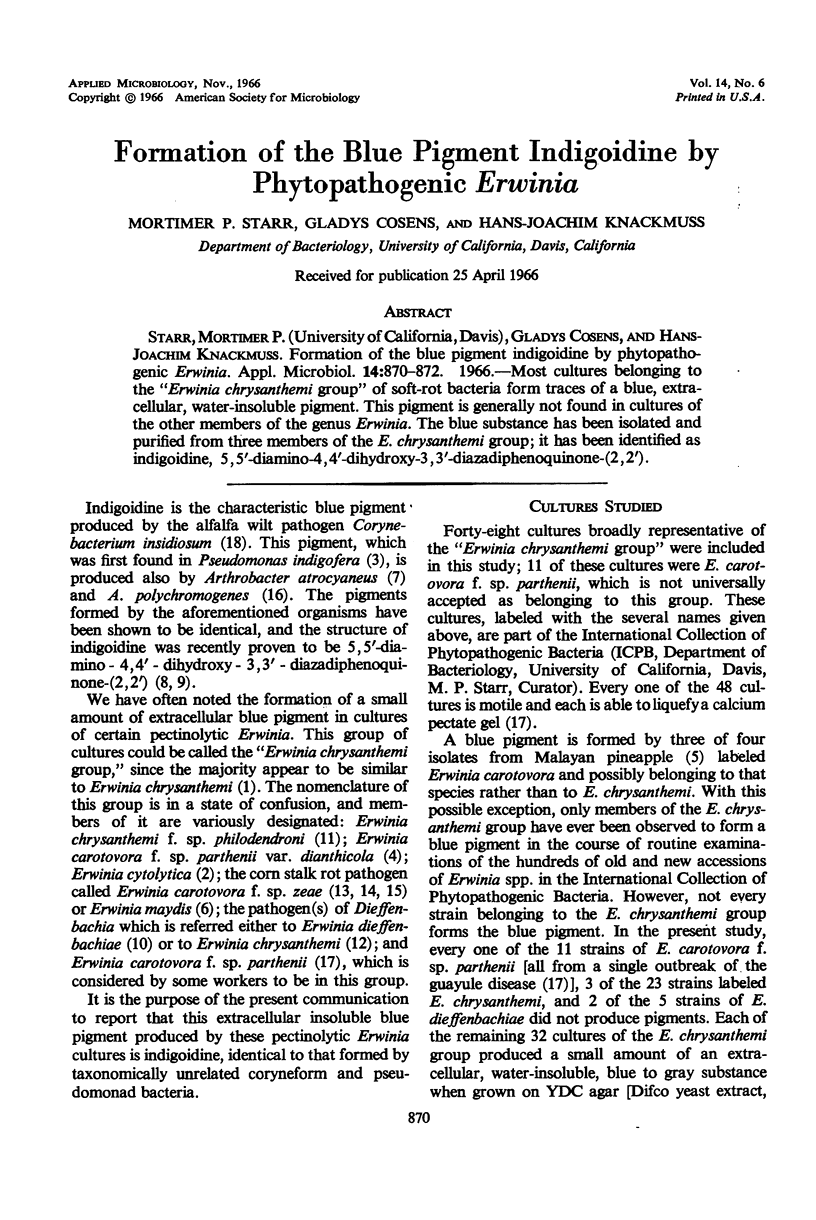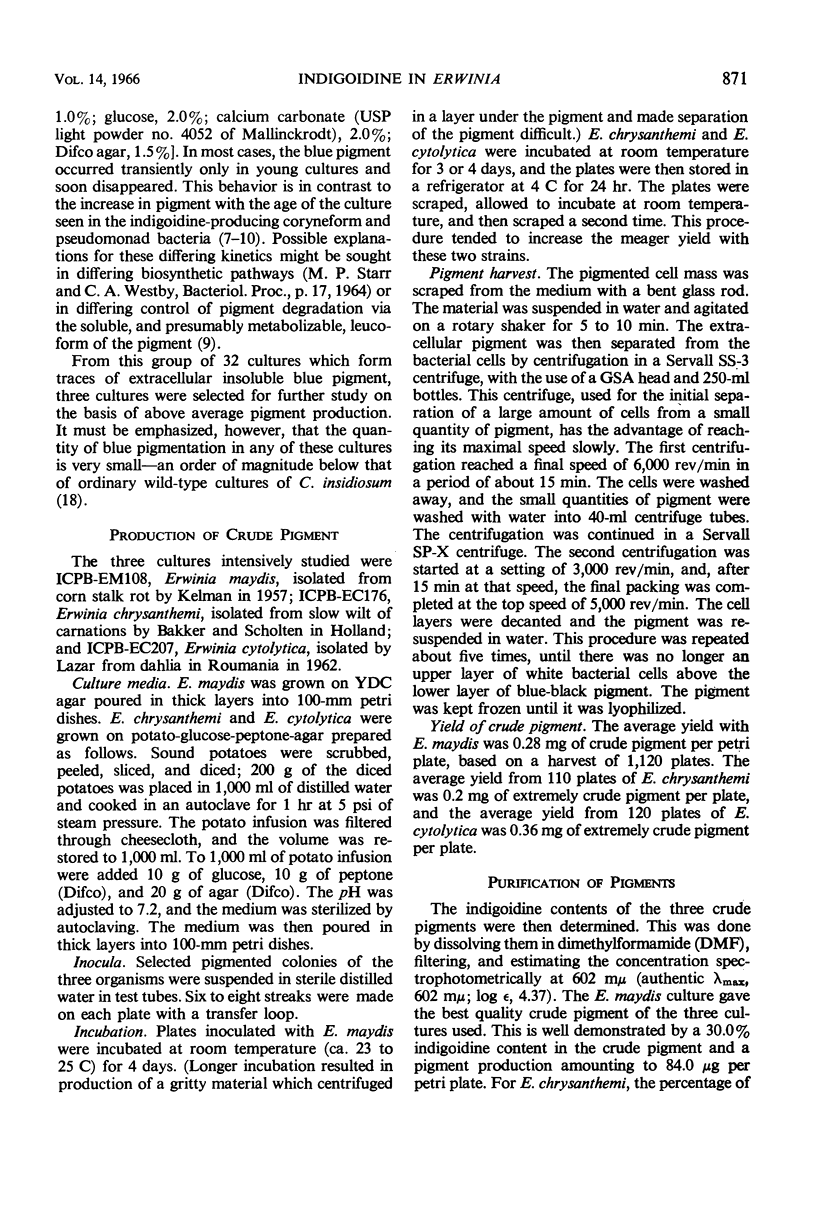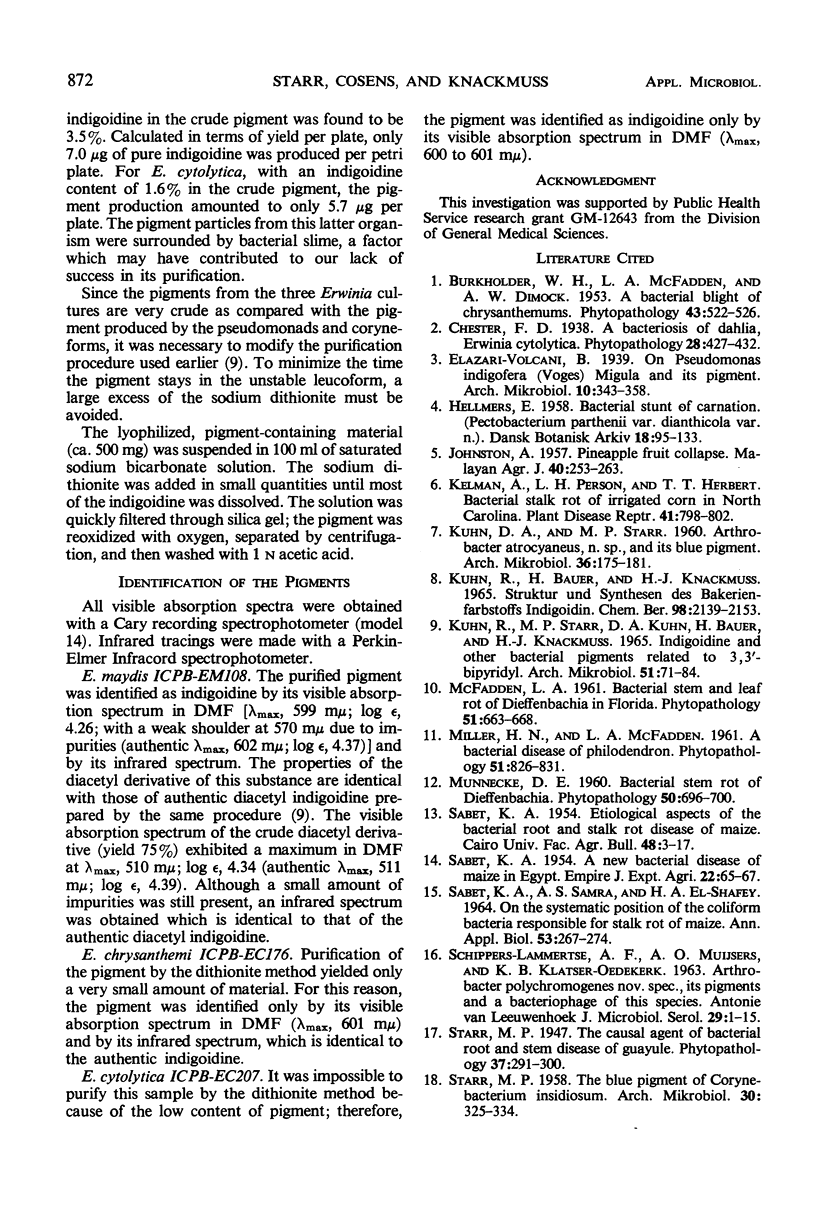Abstract
Most cultures belonging to the “Erwinia chrysanthemi group” of soft-rot bacteria form traces of a blue, extracellular, water-insoluble pigment. This pigment is generally not found in cultures of the other members of the genus Erwinia. The blue substance has been isolated and purified from three members of the E. chrysanthemi group; it has been identified as indigoidine, 5,5′-diamino-4,4′-dihydroxy-3,3′-diazadiphenoquinone-(2,2′).
Full text
PDF


Selected References
These references are in PubMed. This may not be the complete list of references from this article.
- KUHN D. A., STARR M. P. Arthrobacter atrocyaneus, n. sp., and its blue pigment. Arch Mikrobiol. 1960;36:175–181. doi: 10.1007/BF00412285. [DOI] [PubMed] [Google Scholar]
- KUHN R., STARR M. P., KUHN D. A., BAUER H., KNACKMUSS H. J. INDIGOIDINE AND OTHER BACTERIAL PIGMENTS RELATED TO 3,3'-BIPYRIDYL. Arch Mikrobiol. 1965 May 28;51:71–84. doi: 10.1007/BF00406851. [DOI] [PubMed] [Google Scholar]
- Kuhn R., Bauer H., Knackmuss H. J. Struktur und Synthesen des Bakterienfarbstoffs Indigoidin. Chem Ber. 1965 Jul;98(7):2139–2153. doi: 10.1002/cber.19650980714. [DOI] [PubMed] [Google Scholar]
- STARR M. P. The blue pigment of Corynebacterium insidiosum. Arch Mikrobiol. 1958;30(4):325–334. doi: 10.1007/BF00411227. [DOI] [PubMed] [Google Scholar]


